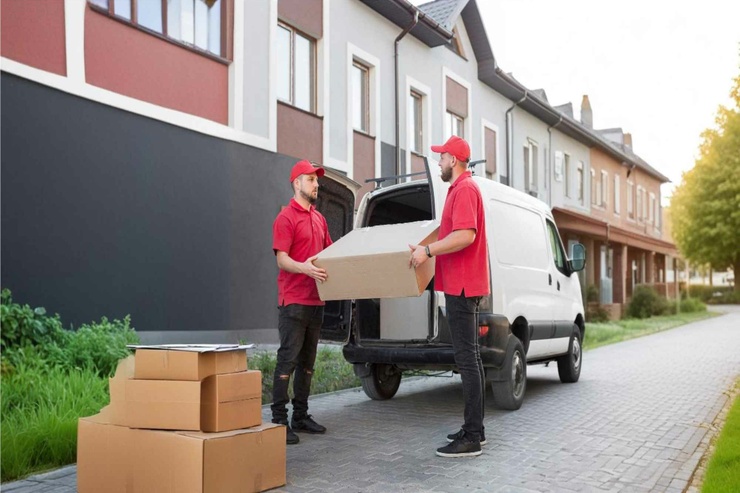- Route
What is Delivery Delay? Top 8 Reasons for Late Delivery & Steps to Mitigate Them
In the world of logistics and supply chain management, timely delivery is the holy grail. Customers, whether they're waiting for a cherished online purchase or a critical component for their business operations, expect their shipments to arrive promptly. However, the reality of the logistics landscape is such that delays can and do occur. In this blog post, we'll delve into the complexities of delivery delays from a logistical standpoint, exploring their causes, implications, and strategies for mitigation.
8 Causes of Delay in Delivery
Traffic Congestion: In urban areas or during peak hours, traffic congestion can bring delivery vehicles to a standstill. This not only leads to late delivery but can also impact fuel efficiency and driver schedules.
Weather Conditions: Adverse weather, such as heavy rain, snowstorms, or hurricanes, can disrupt transportation networks. Roads may become impassable, and flights might be grounded, causing significant delays.
Supply Chain Disruptions: Delays in the manufacturing or procurement process can have a ripple effect on the entire supply chain. Late shipments from suppliers can lead to delays in outbound deliveries.
Infrastructure Issues: Problems with transportation infrastructure, such as bridge closures, road repairs, or port congestion, can hinder the movement of goods.
Customs and Regulatory Holdups: International shipments often face late delivery due to customs inspections, documentation errors, or changes in import/export regulations.
Vehicle Breakdowns: Mechanical failures or accidents involving delivery vehicles can disrupt schedules and lead to delays.
Driver Shortages: The logistics industry frequently experiences driver shortages, which can result in delays as companies struggle to meet demand with limited resources.
Incorrect Addresses: Incorrect or incomplete delivery addresses can lead to confusion, requiring additional time to reroute shipments.
The Implications of Delivery Delays
Customer Dissatisfaction: For businesses, delivering on time is often a key factor in customer satisfaction. late delivery can lead to unhappy customers, negative reviews, and even loss of future business.
Operational Disruptions: Delayed shipments can disrupt a company's internal operations. Manufacturers may face production slowdowns, and retailers may struggle to manage inventory effectively.
Increased Costs: Logistics companies may incur additional costs due to delays, such as overtime wages for drivers, expedited shipping charges, or penalties for missing delivery windows.
Reputation Damage: Consistent delivery delays can damage a company's reputation and erode trust with customers.
Lost Sales Opportunities: In the e-commerce world, delayed deliveries can result in abandoned shopping carts, lost sales, and missed revenue opportunities.
Mitigating Delays in Delivery: Strategies for Success
Real-time Tracking: Implementing advanced tracking systems allows logistics companies to monitor shipments in real-time. This visibility enables them to react promptly to unexpected delays and provide customers with accurate delivery updates.
Route Optimization: Employing route optimization software helps drivers take the most efficient routes, reducing travel time and fuel consumption. This is particularly critical for last-mile deliveries
Weather Forecasting: Staying informed about weather conditions along delivery routes allows companies to proactively adjust schedules, reroute shipments, or reschedule deliveries to avoid weather-related delays.
Alternative Routes: Identifying alternative routes and transportation modes can help bypass traffic congestion, infrastructure issues, or other logistical obstacles.
Supplier Collaboration: Collaborating closely with suppliers can help minimize delays in the supply chain. Communication and coordination ensure that shipments arrive on time, reducing the risk of downstream delays.
Inventory Buffer: Maintaining safety stock or buffer inventory can help businesses mitigate the impact of supply chain disruptions. This extra inventory can cover temporary delays in the supply chain.
Customer Communication: Open and transparent communication with customers is essential. Providing regular updates on delays and revised delivery times can help manage expectations and reduce dissatisfaction.
Fleet Maintenance: Regular maintenance and inspections of delivery vehicles can prevent breakdowns and accidents, reducing the likelihood of unexpected delays.
The Role of Technology in Delay Mitigation
Real-time Visibility: FarEye's platform provides real-time visibility into the entire delivery process. This enables logistics companies to monitor shipments at every stage, identify delays, and take corrective action promptly.
Predictive Analytics: FarEye's predictive analytics capabilities use historical data to anticipate potential delays. By proactively addressing these issues, logistics companies can minimize their impact.
Dynamic Routing: FarEye's dynamic routing algorithms optimize delivery routes in real-time, factoring in variables like traffic, weather, and road conditions. This minimizes travel time and reduces late delivery.
Automation: Automation features in FarEye's platform streamline various logistical processes, reducing the risk of errors and bottlenecks that can lead to delays.
Customer Engagement: FarEye's communication tools facilitate transparent and proactive communication with customers. Automated notifications and updates keep customers informed about their deliveries, managing their expectations and reducing dissatisfaction.
Conclusion
Delivery delays are an inherent part of the complex logistics landscape. However, they need not be insurmountable obstacles. By understanding the causes, recognizing the implications, and employing effective strategies and technology solutions like FarEye, businesses can navigate these challenges with greater efficiency. In doing so, they can minimize the impact of delays, enhance customer satisfaction, and maintain the smooth flow of goods and services through their supply chains.

Komal Puri is a seasoned professional in the logistics and supply chain industry. As the AVP of Marketing and a subject matter expert at FarEye, she has been instrumental in shaping the industry narrative for the past decade. Her expertise and insights have earned her numerous awards and recognition. Komal’s writings reflect her deep understanding of the industry, offering valuable insights and thought leadership.
Let's Talk to Our Experts and Optimize Your Deliveries Today!
An expert from our team will reach out within 24 hours



